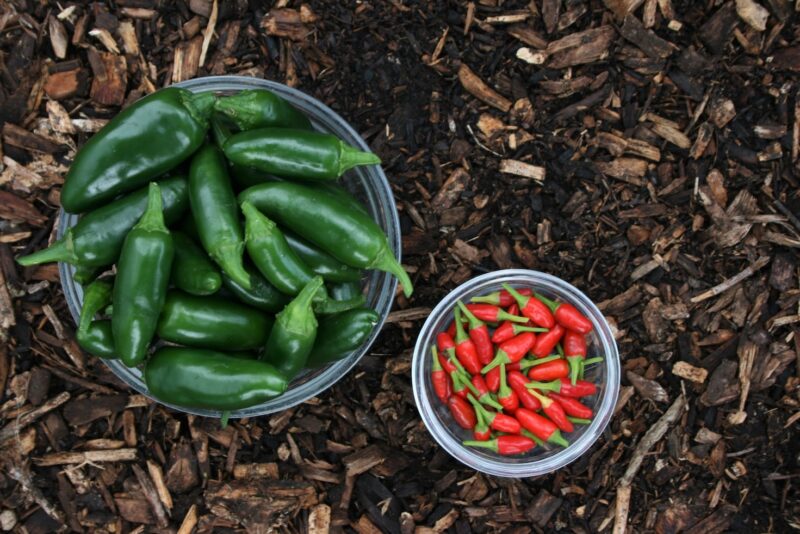Today, we’re about to dive headfirst into the sizzling world of jalapenos. Grab your goggles because we’re journeying through the Scoville Scale, the ultimate hotness meter for chili peppers.
Stick around to find out just where jalapeno lands on this scale and why it has that signature kick. So, whether you’re a fiery food fanatic, a budding cook, or just someone who loves fun facts, this one’s for you. Let’s fire things up!
The Scoville Scale: A Primer
Before we talk about the jalapeno’s heat level, let’s first understand the Scoville Scale – the definitive measurement tool used globally to quantify the ‘heat’ of chili pepper. Named after its inventor, Wilbur Scoville, an American pharmacist, it measures the pungency or spicy heat of chili peppers and other spicy foods.
Essentially, it measures the concentration of capsaicin, the chemical responsible for the spicy sensation. The scale ranges from 0 to over 2 million Scoville Heat Units (SHUs).
A bell pepper, which contains no capsaicin, has a Scoville rating of zero, while the extremely fiery Carolina Reaper ranges between 1.4 to 2.2 million SHUs.
Capsaicin: The Heat Producer
Capsaicin, a colorless and odorless compound, is found in the inner part of the chili pepper, specifically the placental tissue that holds the seeds. Interestingly, capsaicin doesn’t have a taste; instead, it stimulates chemical receptors in the skin and mucous membranes, creating the sensation of heat.
All About Jalapenos
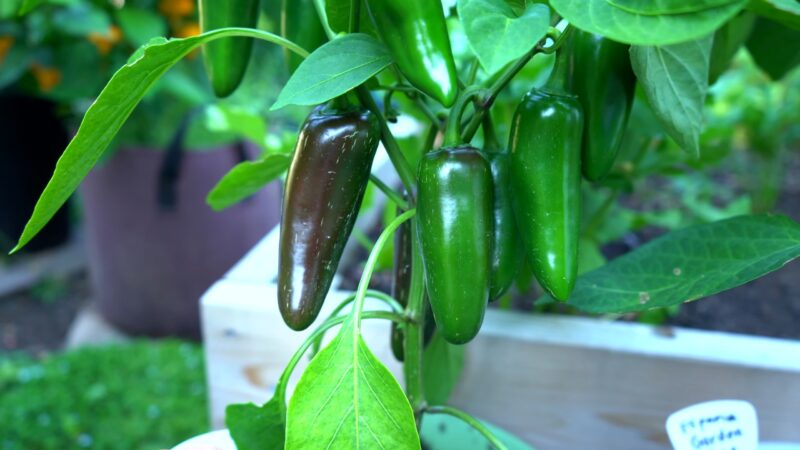
Now that we have a basic understanding of the Scoville Scale let’s turn our attention to the jalapeno, a medium-sized chili pepper known for its vibrant green color, thick flesh, and bright, grassy flavor. Originating in Mexico, these peppers are a staple in numerous culinary traditions worldwide, from American Southwest to Asian cuisine.
Physical and Culinary Characteristics
Jalapenos are typically 2-3.5 inches long and are usually harvested when they’re green. They are versatile in the kitchen and can be used in a variety of dishes, from nachos and tacos to salsa and chili.
Their heat, while prominent, is not overwhelming, making them an excellent introduction to the world of spicy foods.
Cultural Significance
These peppers have a significant cultural impact, especially in Mexican and Tex-Mex cuisine. They symbolize more than just heat; their unique flavor contributes to the overall palate of dishes.
Festivals like the Jalapeno Festival in Laredo, Texas, celebrate this humble pepper, where people participate in eating contests, enjoy live music, and appreciate art.
So, How Hot is a Jalapeno?
The Scoville Rating
Finally, we arrive at the main question – how hot is a jalapeno? Well, on the Scoville Scale, these peppers range between 2,000 to 8,000 SHUs.
To give you some context, that’s about 40 times hotter than the mildest chili pepper but far less fiery than habaneros, which start at 100,000 SHUs.
Comparative Heat
Let’s see how jalapenos compare with other common peppers on the Scoville Scale:
| Pepper Name | Scoville Heat Units (SHUs) |
| Bell pepper | 0 SHUs |
| Banana pepper | 0-500 SHUs |
| Poblano pepper | 1,000-1,500 SHUs |
| Jalapeno pepper | 2,000-8,000 SHUs |
| Cayenne pepper | 30,000-50,000 SHUs |
| Habanero pepper | 100,000-350,000 SHUs |
| Ghost pepper | 850,000-1,041,427 SHUs |
From this, it’s clear that while jalapenos pack some heat, they’re quite mild compared to some of their chili cousins.
Heat Variation Factors
The heat level of a jalapeno pepper can vary depending on several factors, such as its size, maturity, and growing conditions. For example, stress from insufficient water can result in hotter peppers.
Similarly, the peppers become hotter as they ripen, with red jalapenos being hotter than their green counterparts.
Handling and Cooking Jalapenos Safely
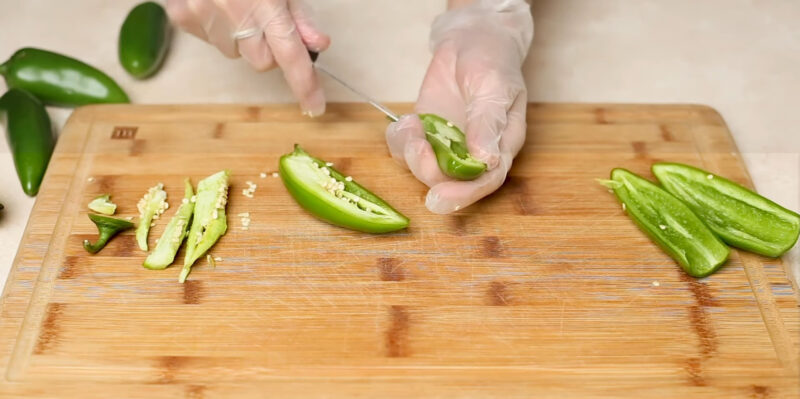
Protecting Yourself
Jalapenos may not be the hottest peppers out there, but they can still cause discomfort if not handled properly. Capsaicin can irritate the skin and eyes, so it’s essential to take precautions when preparing them.
Safe Handling Techniques
- Always wear gloves when handling these peppers, especially when cutting or deseeding them.
- Avoid touching your face or eyes while working with jalapenos.
- After handling them, wash your hands thoroughly with soap.
In Case of Irritation
If you experience a burning sensation on your skin, wash the area with soap and cool water. If your eyes are affected, rinse them with cool water immediately.
Drinking milk can also help alleviate the burning sensation in your mouth caused by eating hot peppers.
Uses in Cooking
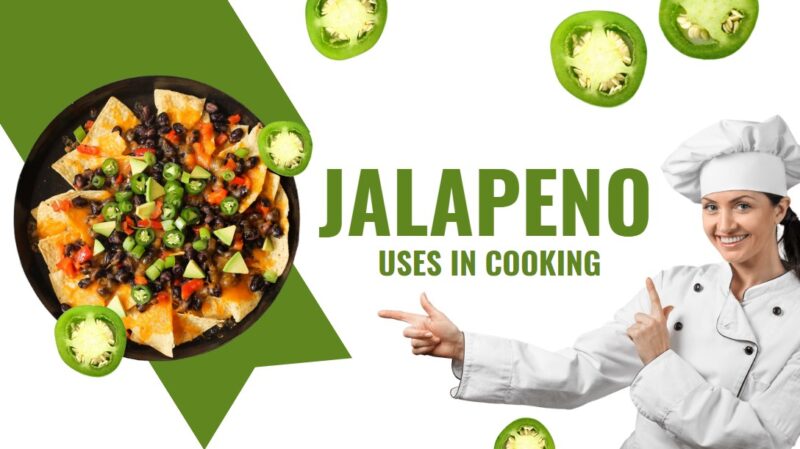
Jalapenos are versatile and can add a flavorful kick to many dishes. Here are some ways you can use them in your kitchen.
How to Incorporate Them
- Add finely chopped jalapenos to your salsa or guacamole for an extra punch.
- Use them in marinades for meat or poultry to add a spicy, tangy flavor.
- Slice them up and use them as a pizza topping or in your pasta sauce.
Cooking Techniques to Reduce Heat
If you find the heat of jalapenos overwhelming, there are ways to reduce it:
- Remove the seeds and the white membranes inside the pepper, as they contain most of the capsaicin.
- Cook them, as heat reduces their spiciness.
The Health Benefits
Apart from their heat and unique flavor, jalapenos have numerous health benefits. They are packed with nutrients and have been linked to various health improvements, including better digestion, weight loss, and pain relief.
Nutrient Rich
They are low in calories but high in vital nutrients. Also, they contain vitamins A, C, K, and B6, along with significant amounts of folate and dietary fiber.
They also provide minerals such as potassium and copper. Vitamin C, an antioxidant, helps protect your cells from damage, while fiber aids in digestion and can help regulate blood sugar levels.
Capsaicin and Health
Capsaicin, which provides heat in jalapenos, has been shown to have a range of health benefits. Research suggests that it can boost metabolism, promote healthy digestion, and provide pain relief.
It has also been studied for its potential anti-cancer properties.
The Power of Antioxidants
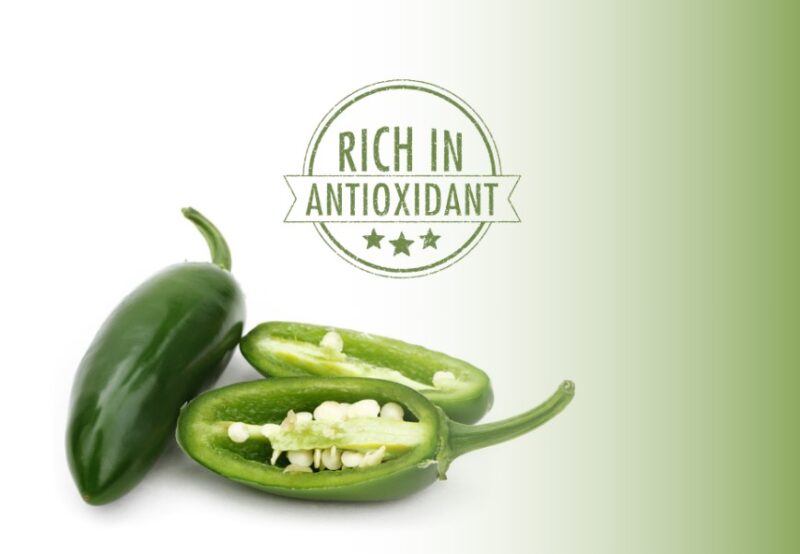
Jalapenos, like other chili peppers, are rich in antioxidants, substances that help combat the harmful effects of free radicals in the body. Some of these antioxidants include capsaicin, capsanthin, and lutein.
Fighting Free Radicals
Free radicals can cause cellular damage leading to a variety of diseases, including heart disease and cancer. Antioxidants neutralize these free radicals, reducing their potential harm.
By including jalapenos in your diet, you could be giving your body an extra line of defense against these harmful molecules.
Capsanthin and Lutein
In addition to capsaicin, jalapenos contain other antioxidants such as capsanthin, which gives peppers their vibrant color, and lutein, known to contribute to eye health. Lutein has been studied for its potential to reduce the risk of chronic eye diseases, including age-related macular degeneration and cataracts.
FAQs
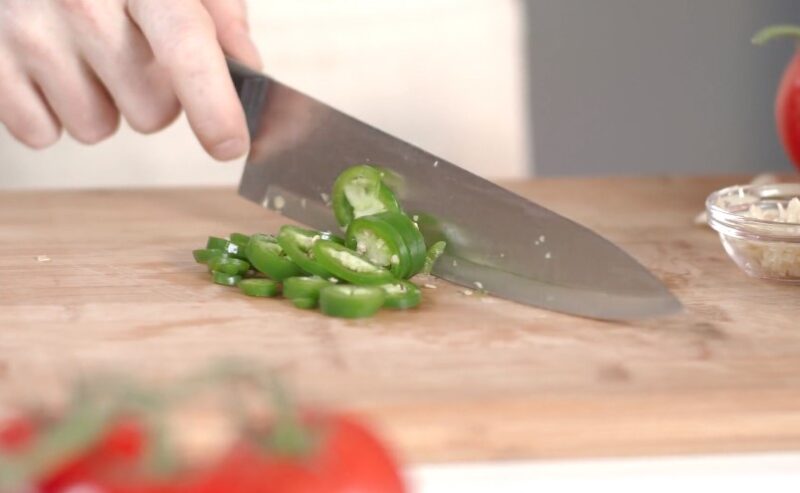
Where does the Jalapeno originate from?
It is native to Mexico and is named after Xalapa, the capital city of Veracruz, Mexico, where the pepper was traditionally cultivated.
How hot is a Jalapeno on the Scoville scale?
Its heat on the Scoville scale ranges from 2,000 to 8,500 Scoville Heat Units (SHU).
Does the color of a Jalapeno affect its heat?
Yes, as the peppers ripen, their pungency increases, making red variations generally hotter than green ones, at least of the same variety.
What factors can increase the pungency of a Jalapeno?
If the Jalapeno plants were stressed by increased water salinity, erratic watering, temperature, light, soil nutrition, insects, or illness, this will increase their pungency.
What is the size of a mature Jalapeno?
A mature Jalapeno chili is 5–10 cm (2–4 in) long and hangs down with a round, firm, smooth flesh of 25–38 mm (1–1 1⁄2 in) wide.
What are the nutritional benefits of Jalapenos?
A raw Jalapeno is 92% water, 6% carbohydrates, and 1% protein, and contains negligible fat. It is a rich source of vitamin C, vitamin B6, and vitamin E, with vitamin K in a moderate amount.
What are some common uses of Jalapenos in cooking?
They are often used in salsas, pico de gallo, or grilled. They can also be stuffed with seafood, meat, poultry, or cheese. Additionally, they can be pickled or smoked (known as chipotles).
What is the relationship between the number of scars on a Jalapeno and its heat level?
The number of scars on the pepper, which appear as small brown lines called ‘corking,’ has a positive correlation with the heat level. Growing conditions that increase heat levels also cause the pepper to form scars.
Are there milder varieties of Jalapenos?
Yes, some cultivars have been bred to be generally milder, such as the ‘TAM Milds’ and ‘Dulcito.’
Final Words
Jalapenos, with their Scoville rating of 2,000 to 8,000, are the perfect peppers for those who enjoy a manageable level of spice. Their heat is enough to awaken your taste buds without setting them on fire, and their vibrant flavor can enhance a wide range of dishes.
Remember to handle them with care to avoid irritation, and don’t be afraid to experiment with them in your kitchen.

